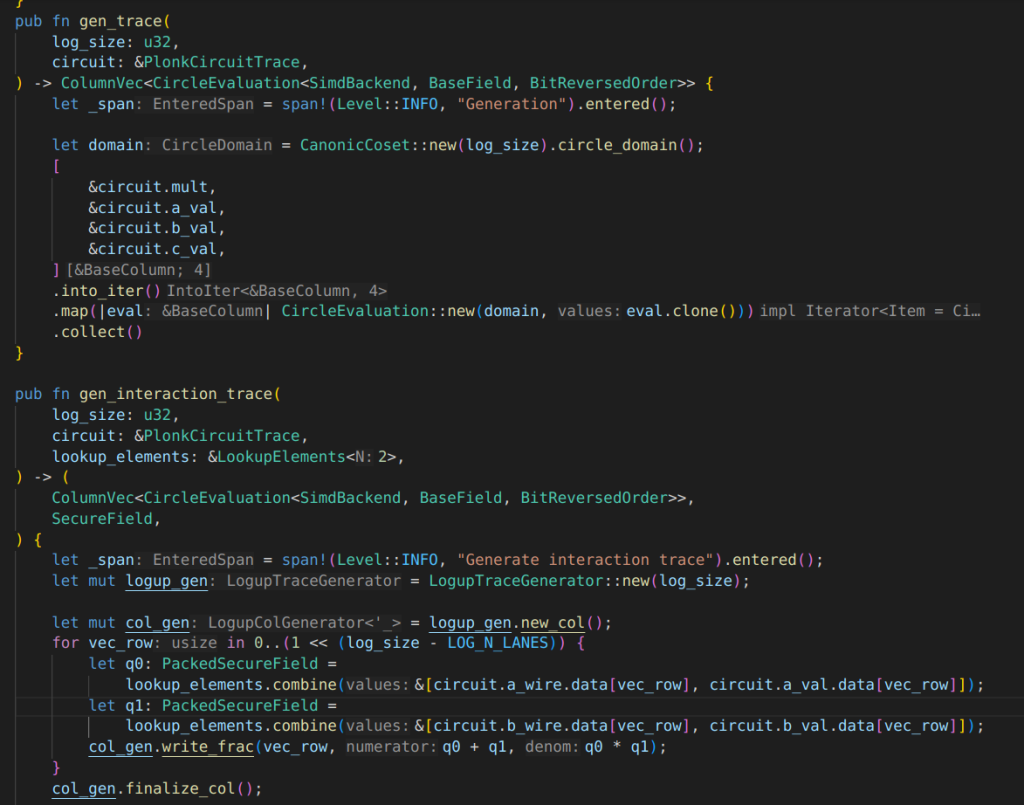in Powdr, the proving function of Plonky3 is in function prove_with_key, in stark.rs
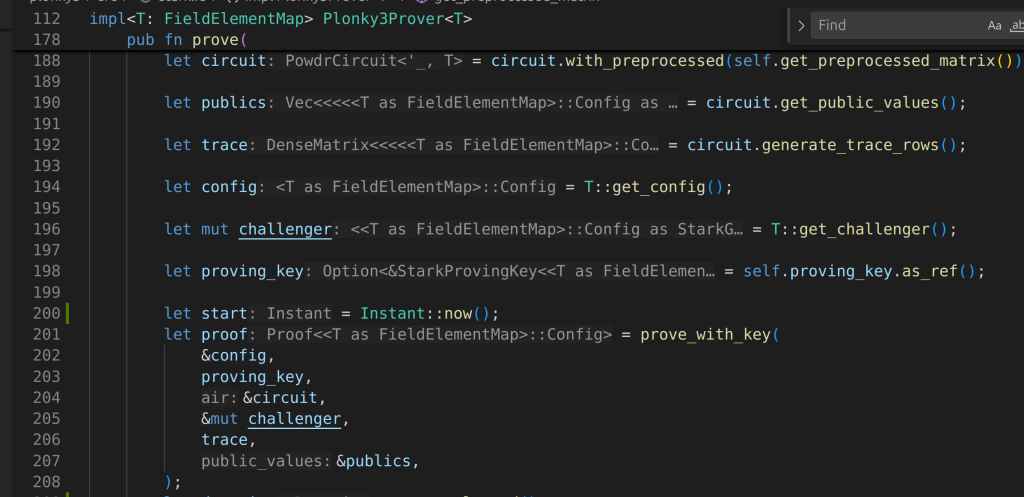
you can see the inputs for prove_with_key function has “air”, this is what used to define constraints, powdr gives “&circuit” to it, and it is a powdrcircuit, probably powdrcircuit applies the trait of AIR
so at this point I think I need to understand how Plonly3 defines AIR, using this example to learn.
In this example, AIR is defined like this:
// Define your AIR constraints inputs via declaring a Struct with relevant inputs inside it.
pub struct FibonacciAir {
pub num_steps: usize, // numbers of steps to run the fibonacci iterations
pub final_value: u32, // precomputed final result after the numbers of steps.
}
// Define your Execution Trace Row size,
impl<F: Field> BaseAir<F> for FibonacciAir {
fn width(&self) -> usize {
2 // Row width for fibonacci program is 2
}
}
// Define your Constraints
impl<AB: AirBuilder> Air<AB> for FibonacciAir {
fn eval(&self, builder: &mut AB) {
let main = builder.main();
let local = main.row_slice(0); // get the current row
let next = main.row_slice(1); // get the next row
// Enforce starting values
builder.when_first_row().assert_eq(local[0], AB::Expr::zero());
builder.when_first_row().assert_eq(local[1], AB::Expr::one());
// Enforce state transition constraints
builder.when_transition().assert_eq(next[0], local[1]);
builder.when_transition().assert_eq(next[1], local[0] + local[1]);
// Constrain the final value
let final_value = AB::Expr::from_canonical_u32(self.final_value);
builder.when_last_row().assert_eq(local[1], final_value);
}
}
I think the most important function should be eval, should be from a trait
BASE AIR and AIR are traits, defined in plonky3/air
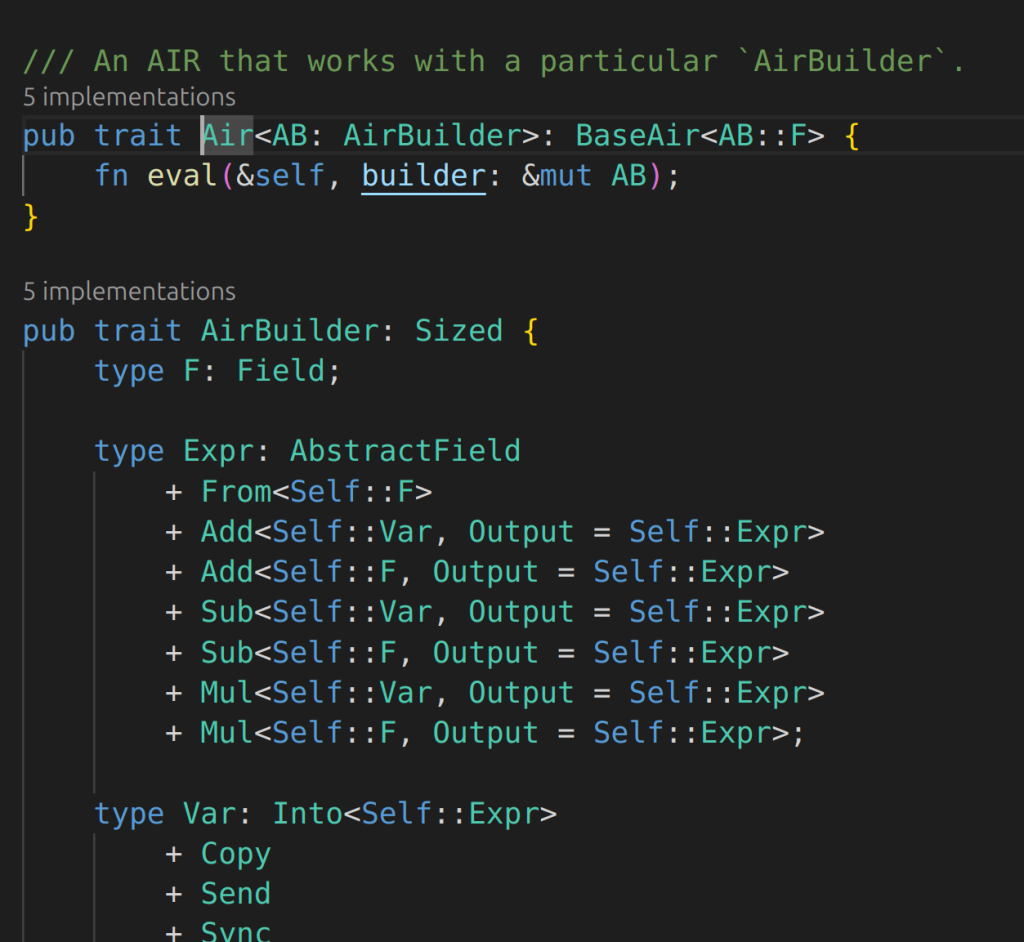
And powdr implement AIR for PowdrCircuit
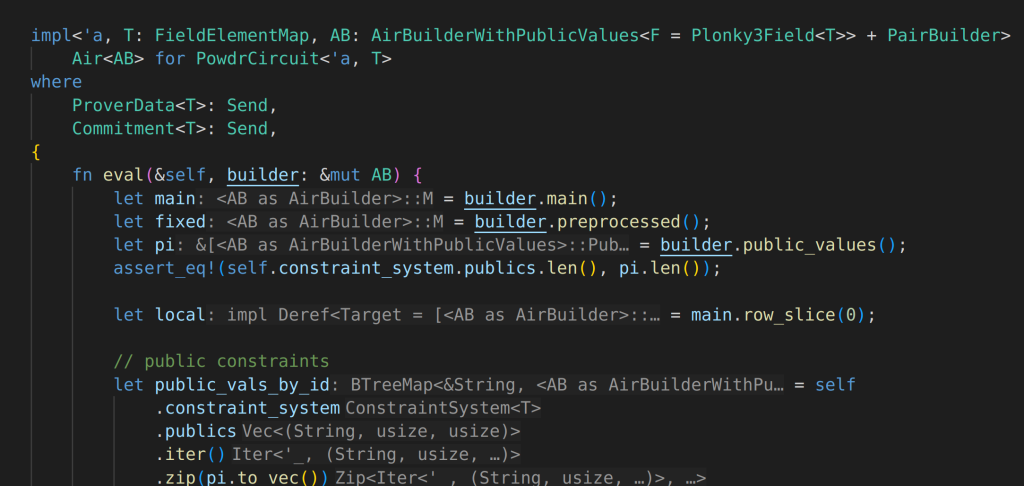
for stwo, the equivalent traits to define the constraints, shoud be FrameworkComponent, FrameworkEval
The conversation to plonky3
in circuit_builder.rs, there is this function to_plonky3_expr()
the constraints derived from analyzed PIL are stored in ConstraintSystem struct, in circuit_builder.rs file.

see, identities are algebraicExpression
but apart from constraint translation, a trace needs to be generated, in powdr for plonky3, this is done in a function in PowdrCircuit
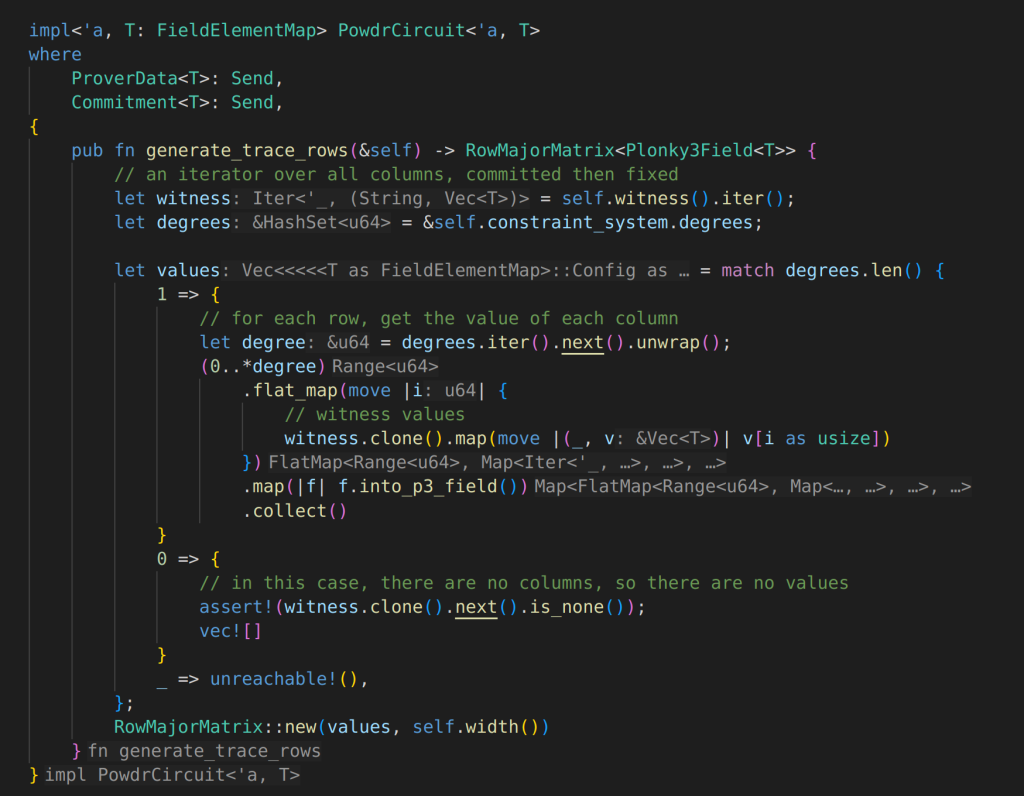
in stwo, the trace is stored in
ColumnVec<CircleEvaluation<SimdBackend, BaseField, BitReversedOrder>>for example, the trace of wide fibonacci and plonk in stwo
wide fibonacci:

and plonk:
